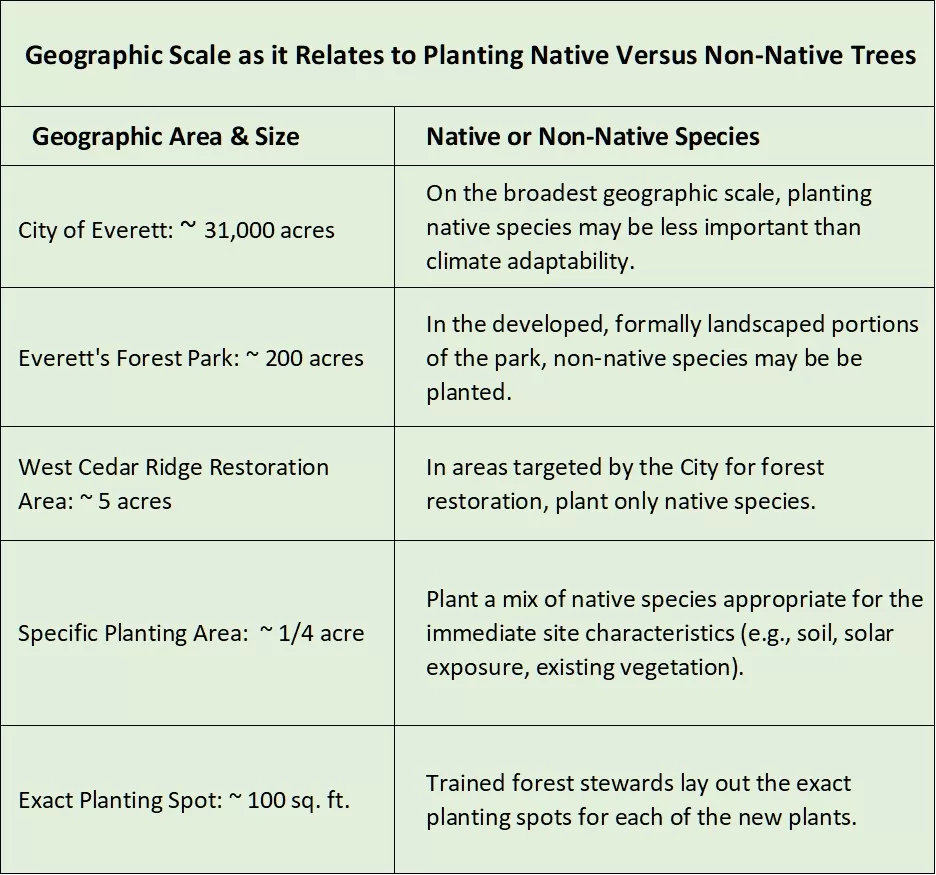Should we still be planting native trees in the Puget Sound Region given the increasing threat of climate change? I know there are no longer perfect native species to plant here, but I thought that planting a mix of natives on appropriate sites was a reasonable, climate adaptive strategy. Recently, however, my confidence was shaken by a list of tree species that was supposed to “aid Puget Sound Region community forestry practitioners in selecting trees to reduce climate change vulnerability of their urban forests.”
What riveted my attention were red “X” marks denoting “not suitable” next to Douglas Fir, Western Redcedar, Western Hemlock, and Grand Fir. I spent several months trying to understand the reasons our indigenous conifers were considered “not suitable.” I spent hours figuring out the meanings of and applications for Heat Zones and Hardiness Zones, and exchanging emails with numerous experts including the professionals directly involved with producing the list. I learned a lot during this process and have finally found resolution in my own mind.
Yes . . . However
Yes, I think that in areas targeted for forest restoration we should continue planting a mix of native trees, taking special care in choosing sites best suited for each species. However, in many other urban sites in our region, it makes sense to consider non-native species that are less vulnerable to climate change. The following table gives an example of this idea as it applies to the City of Everett overall, and my work in Forest Park in particular.

In short, jurisdictions trying to reduce their carbon footprints by planting trees on public land should consider species with less vulnerability to climate change. However, in forested areas targeted for restoration, it still makes sense to plant native species for ecological and cultural reasons. Indeed, the authors of the list state up front that it is “meant to be a complement to other tree selection resources,” and “other factors might also need to be considered, such as aesthetics, local site conditions, wildlife value, or nursery availability.”
By thinking in this way, I have made my peace with the list that caused me such concern. In my ongoing forest restoration efforts, I plan to continue to plant a mix of our iconic native conifers — Grand Fir in aging deciduous forests, Western Redcedars and Western Hemlocks in low shady areas with reliable year-round soil moisture, and Douglas Firs in sunny edges.
